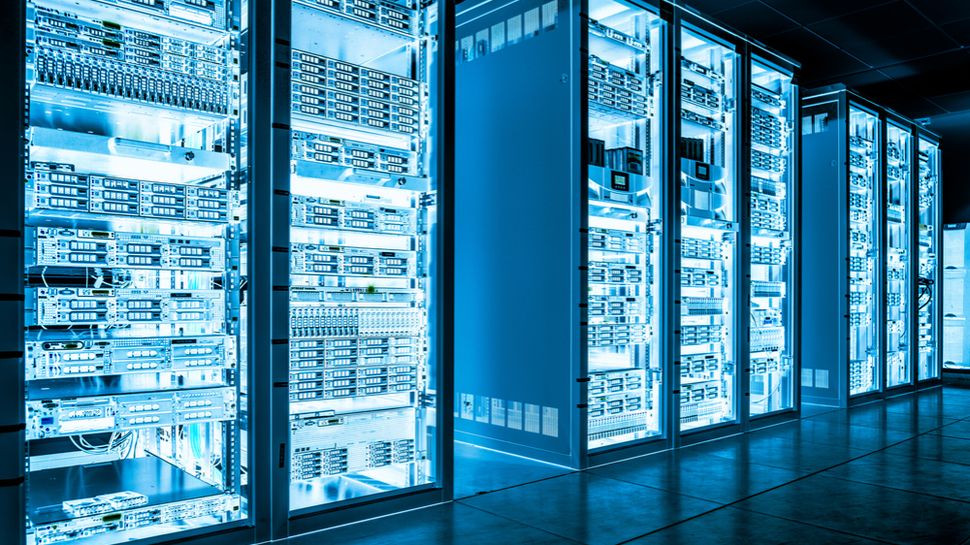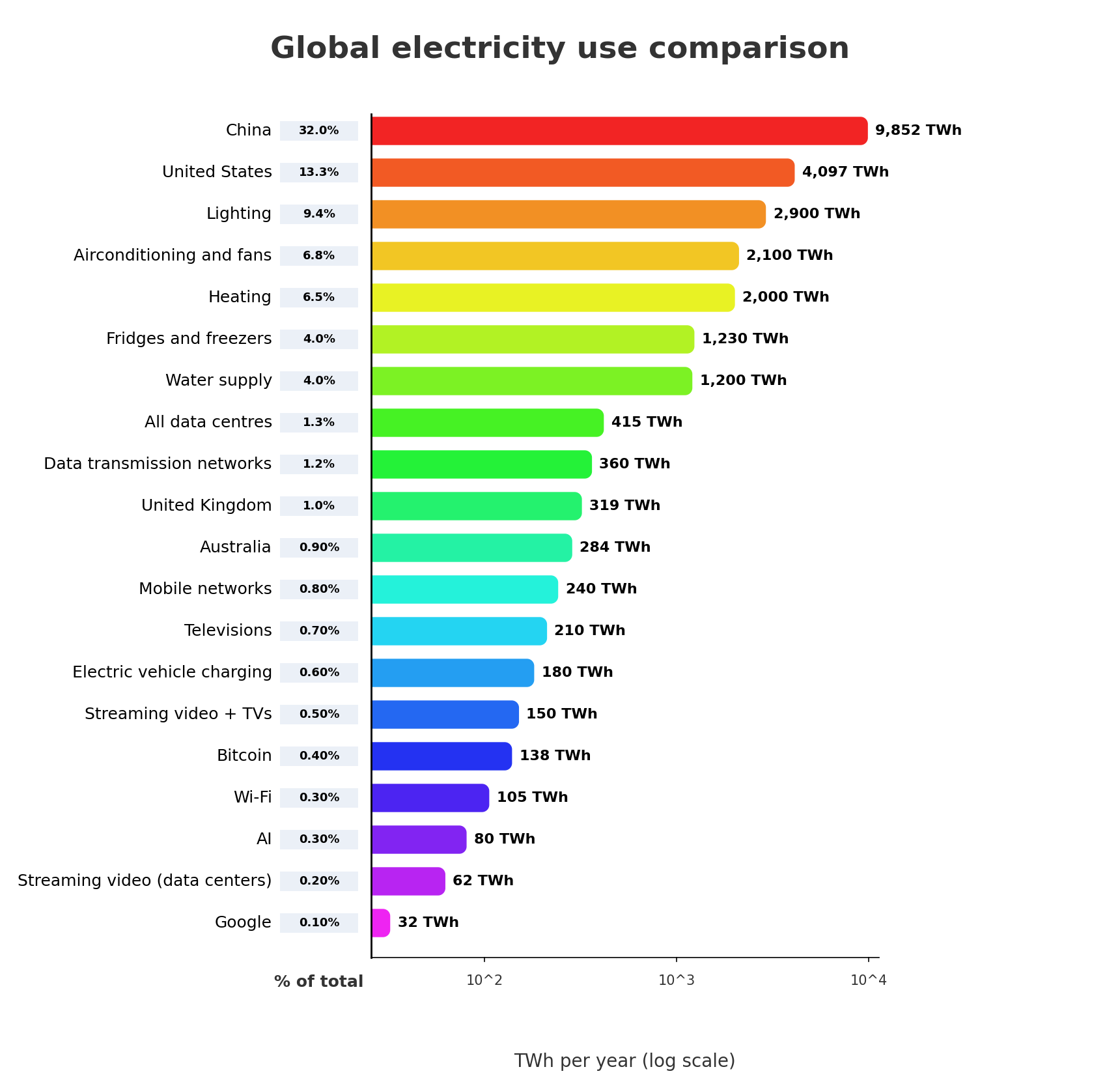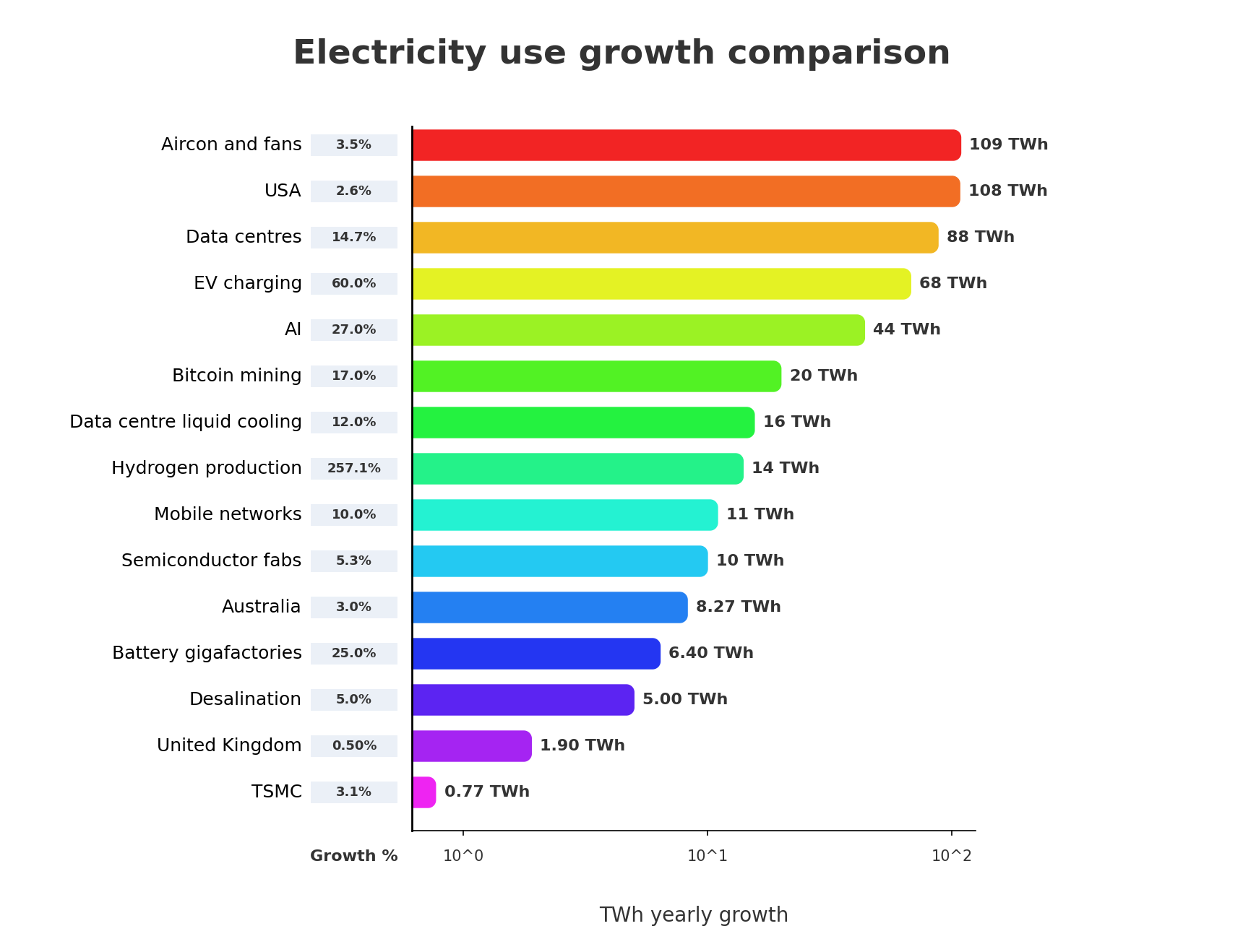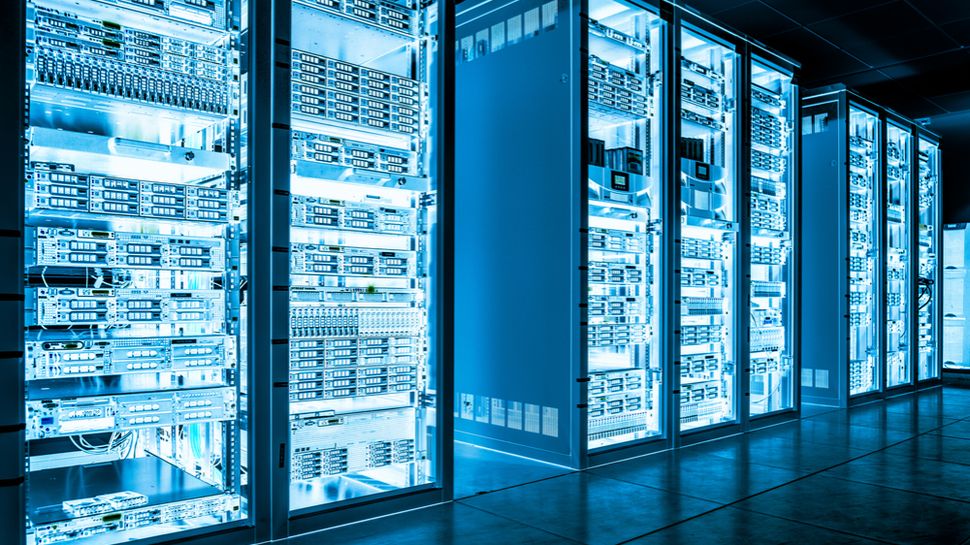Key Points
- OpenAI handles over 2.5 billion prompts daily, but AI’s power use is a small fraction of global electricity.
- AI accounts for roughly 10 % to 20 % of data‑center electricity, with enterprise cloud services using the majority.
- Data‑center power consumption is expected to double by decade’s end, driven partially by AI workloads.
- Cooling AI data centers consumes about 100 GL of water annually, similar to water used on rainy‑day golf‑course irrigation.
- Each AI prompt emits about 0.03 grams of CO₂‑equivalent, comparable to a single human breath.
- AI‑related carbon emissions represent roughly 0.07 % of global emissions, akin to the emissions of Denmark.
- Emerging technologies like 5G and electric‑vehicle charging are projected to outpace AI in future power demand.
- Localized impacts of new data‑center construction can be significant despite AI’s modest global footprint.


Global electricity use comparison bar chart

AI resource use bar chart showing electricity use growth
AI’s Energy Use in Context
OpenAI processes over 2.5 billion prompts daily, yet the power required for those prompts represents only a small slice of personal or global electricity consumption. When placed alongside other technologies, AI’s demand is dwarfed by Wi‑Fi, which would rank among the top 50 electricity users if it were a country. Historical comparisons show that AI’s current power draw is similar to the electricity used by television‑watching families in the 1980s.
Data‑center electricity consumption totals about 415 TWh per year, with AI accounting for roughly 10 % to 20 % of that figure. The majority—over half—supports enterprise and government cloud services, about 15 % fuels streaming video, and a tiny fraction (around 0.2 %) handles the massive volume of smartphone photos stored in the cloud.
Growth Trajectories and Future Demand
Data‑center power use is projected to double by the end of the decade, driven in part by AI workloads. Even if AI becomes the dominant consumer within data centers, its share of total global electricity would remain modest. Other emerging technologies, such as 5G networks and electric‑vehicle charging, are expected to consume far more power than AI in the coming years.
Water Consumption and Cooling Needs
Cooling AI‑related data‑center equipment uses about 100 GL of water annually—an amount comparable to the water spent on watering golf courses during rainy periods. A single 500 ml disposable water bottle could cool roughly 2,000 prompts, while a full flush of a toilet could sustain about 10 prompts per day for nearly five years.
Carbon Emissions Per Prompt
Each AI prompt generates approximately 0.03 grams of CO₂‑equivalent emissions, comparable to the carbon released in a single human breath. Ten prompts a day equal the emissions from a birthday‑cake candle or idling a car for less than a second. Scaling up, AI‑related emissions amount to roughly 0.07 % of the global total, similar to the emissions of the entire country of Denmark.
Localized Environmental Impacts
While AI’s overall resource footprint appears small on a planetary scale, the concentration of new data‑center construction can have pronounced effects on specific towns and ecosystems. The article notes that these localized impacts merit attention even as the broader numbers remain modest.
The analysis underscores that AI is neither the biggest nor the smallest environmental player; it occupies a middle ground that warrants balanced scrutiny as its usage expands.
Source: techradar.com
